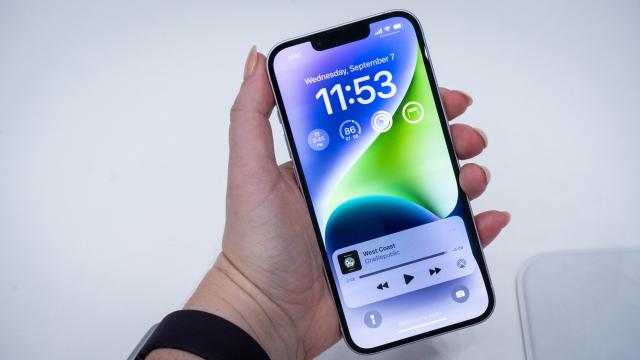If you watched along with Apple’s Far Out event, you saw the numerous dramatic vignettes interspersed between announcements. While I felt perhaps a little too affected by one particular scene of a mother and her child getting rescued atop of a mountain — this was during the segment for the Apple Watch Ultra — I realised that it’s precisely the kind of thing that I’d want my gadget to do: get me out of a life-threatening bind. It’s these kinds of use cases that were on my mind when I went hands-on with Apple’s newly announced devices at yesterday’s event.
Granted, I don’t climb mountains. But the idea that the smartphone or smartwatch already on you is all you need when leaving the house resonated heavily. For every new specification bump Apple made to its iPhone 14 and iPhone 14 Pro flagships, it also added a new utility. For the crappy moments in life, there’s car crash detection, which knows when you’ve had an accident and can call emergency services for you, and the retooled Emergency SOS, which now hooks you up to satellite connections you wouldn’t otherwise have access to in rural areas, either for when you’re in a jam or just want to share your location recreationally. For the thrilling moments, there is an Action mode on the iPhone 14’s camera app that helps stabilise the video the same way a gimble would, so you can live in the moment rather than worry about the gear that you have on your person.
These aren’t the only useful features introduced in Apple’s new lineup, but they’re a glimpse at where Apple is positioning its focus. After all, the iPhone is it. If you’re an iOS user, this is the only lineup (of new stuff) you have to choose from: the iPhone 14 and iPhone 14 Plus, and the iPhone 14 Pro and 14 Pro Max. When we have the phones and other gear in our hands, we’ll have more of an assessment of how the new features perform in the real world. But in the meantime, here’s a peek at Apple’s latest hardware, including its new smartwatches and the AirPods Pro 2.
Let’s start with the iPhone 14
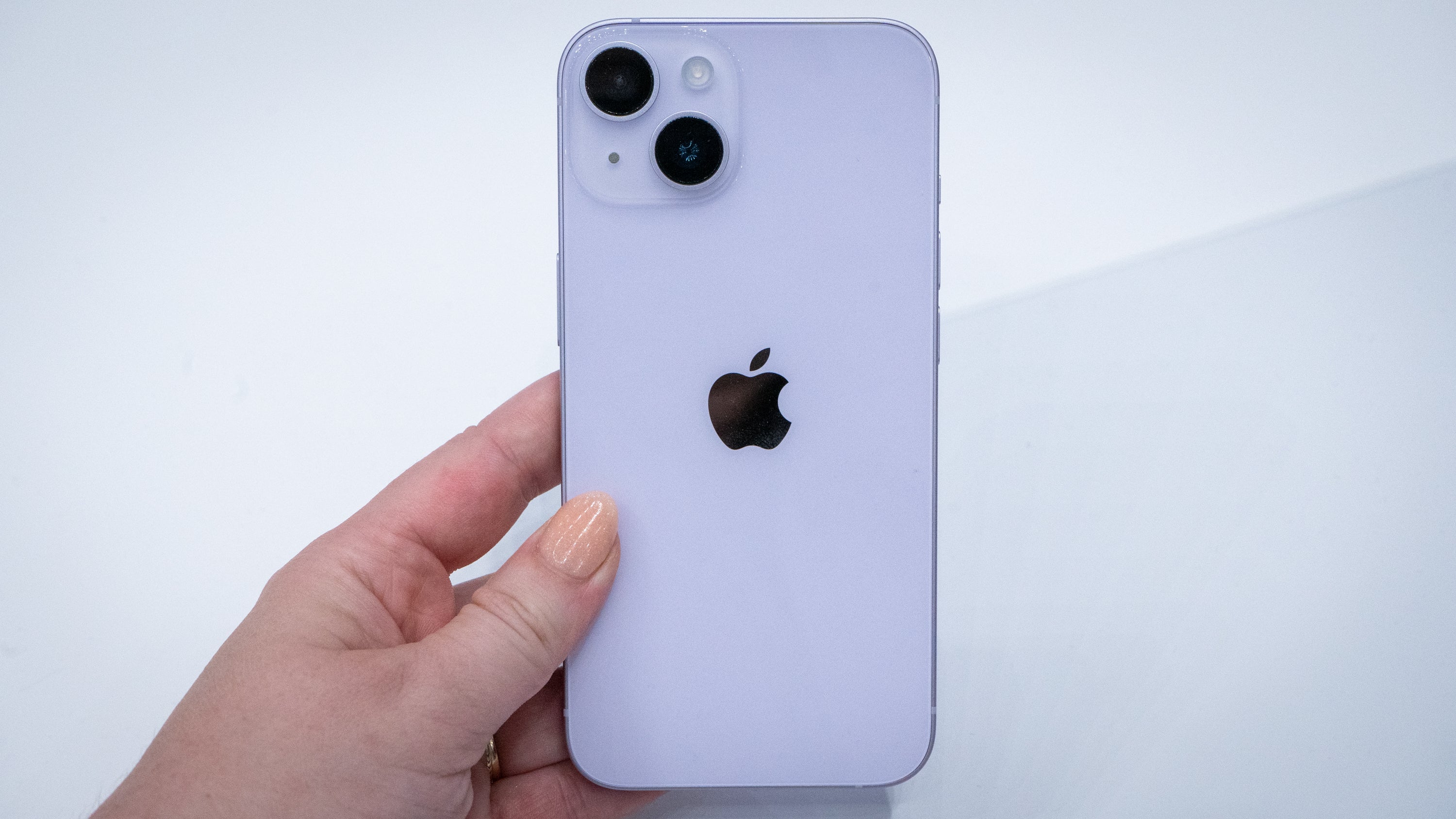
The iPhone 14, the “entry-level” tier of Apple’s smartphone line, features the same Apple Bionic A15 chip as the iPhone 13 and 13 Pro, though it is 8% faster. In addition to the new 6.7-inch screen size on the iPhone 14 Plus, it has a slightly upgraded chassis and internal design, allowing for better thermal performance. There’s still that signature ceramic shield on the outside, which Apple says is tougher than glass, in addition to aerospace-grade aluminium and water and dust resistance. Despite its fancy look — iPhones have a polish to them that Android phones don’t, and I’m saying this as a longtime Android user — Apple promises these are durable devices.
The cameras have been improved on the iPhone 14, too. Like its predecessor, there are two lenses on the back, including a 12-MP primary camera with a large sensor capable of an f/1.5 aperture. That will help immensely with low-light photography and capturing moving subjects. Apple says the new aperture helps aid in a 49% improvement in low light and that the night mode exposure capabilities are twice as fast as before.

Apple announced that the iPhones sold in the U.S. would come sans a SIM tray this time, in favour of the up-and-coming eSIM, which essentially registers your smartphone with the appropriate number through your carrier. The result is that now there are no more SIM slots on either the iPhone 14 or 14 Pro. While I barely noticed the missing SIM tray, I did realise that this meant no more having to pry off the iPhone case to swap SIMs. Once it’s on, it can stay on.
What about the iPhone 14 Pro?
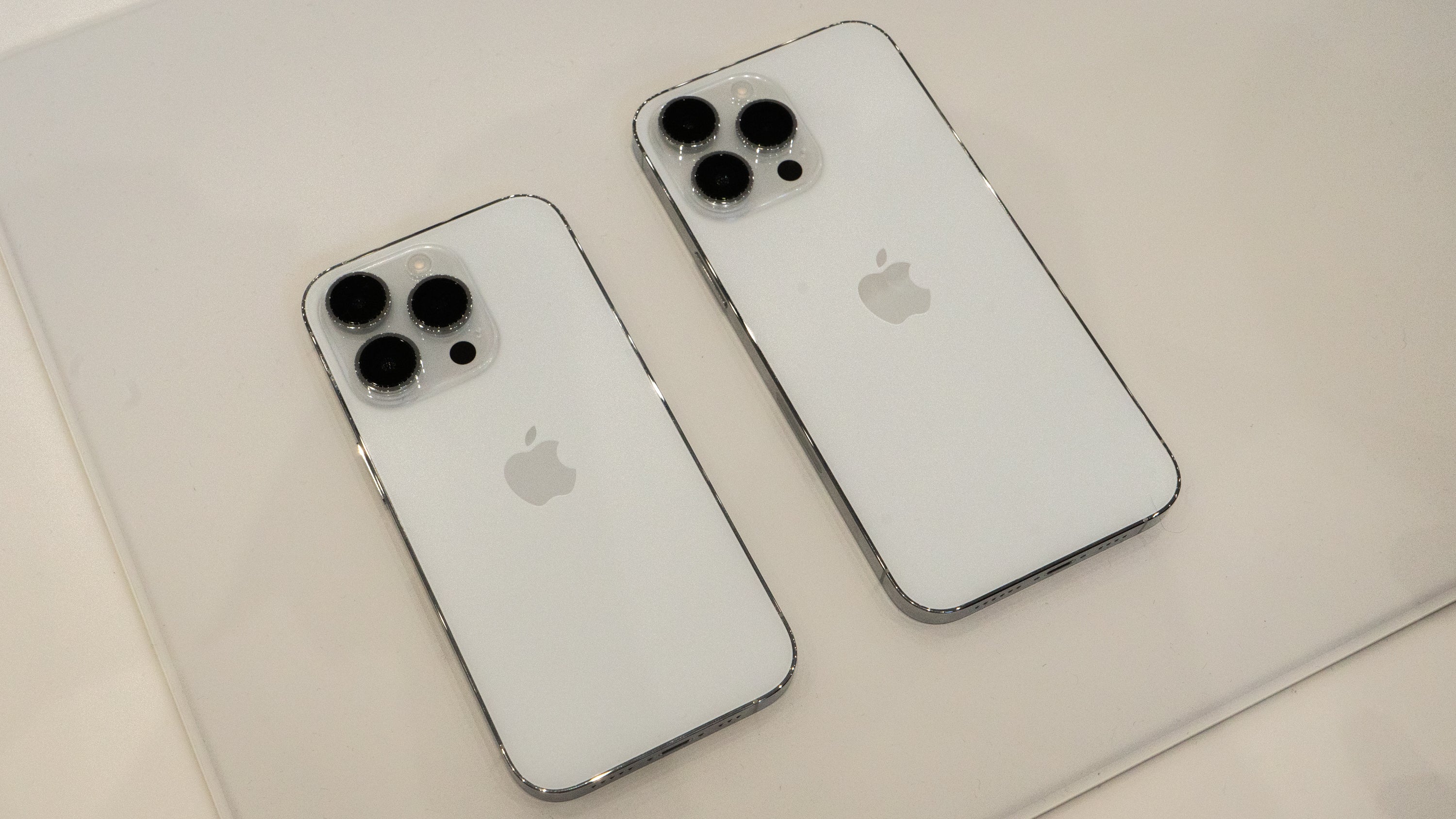
I’ll say it now: the iPhone 14 Pro and Pro Max may not be the revolution you expected if you were thinking of trading up this year. The specifications have improved, but the display size and configurations have remained mostly the same. The iPhone 14 Pro is a 6.1-inch display, while the iPhone 14 Pro Max is a 6.7-inch display. Both are comfortable and easy to handle, and both look like they’re made of premium material that’s way too delicate to go around town without a case.
The best part of the iPhone 14 Pro lineup is the new deep purple colour. Whereas the iPhone 14 comes in a pretty pale lavender situation, the deep purple on the iPhone 14 Pro looks like the colour palette of my high school wannabe goth wardrobe. It is my favourite smartphone colour that I’ve seen in years.
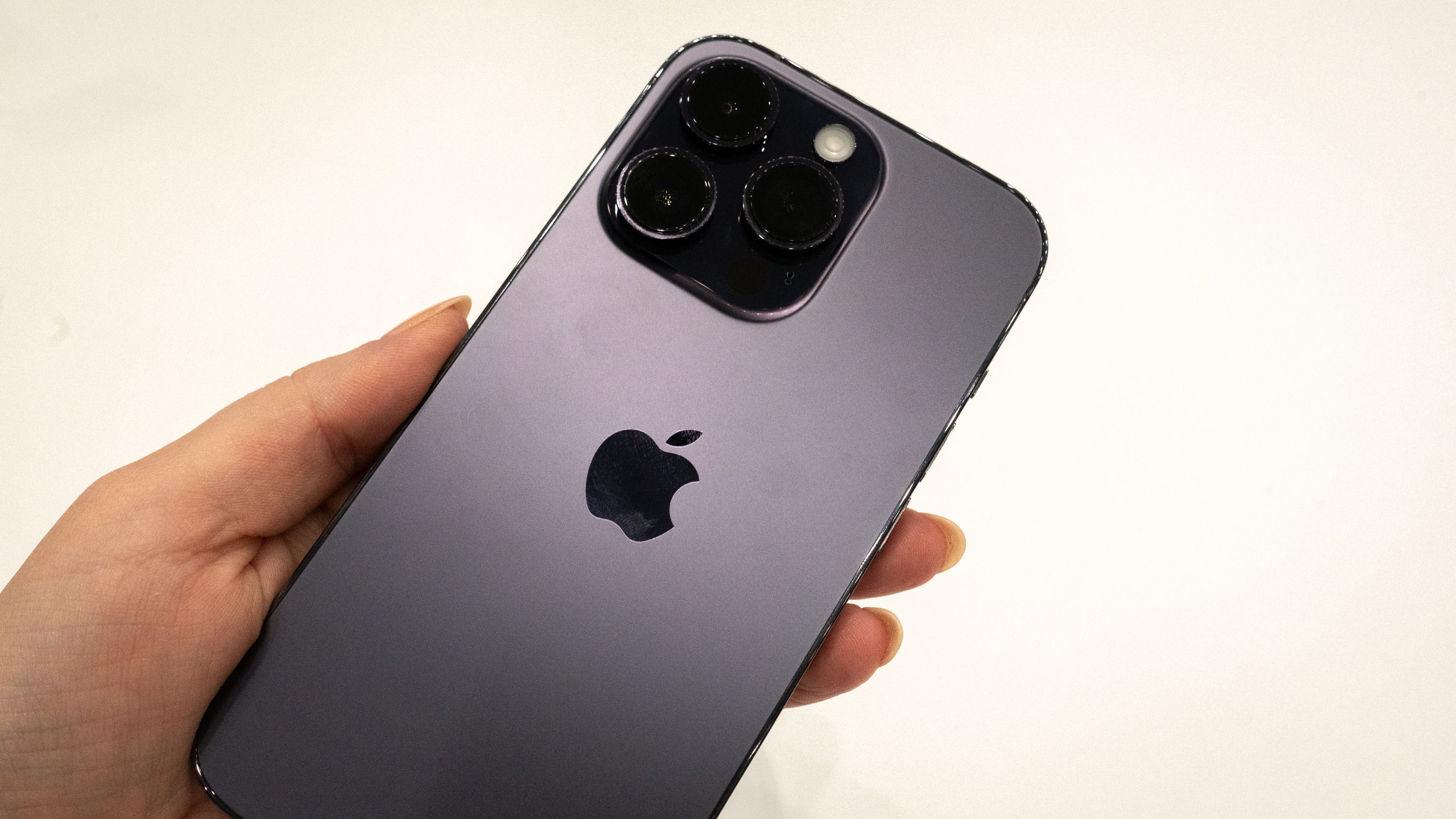
One of the interesting new features of the iPhone 14 Pro is the Dynamic Island. It’s a multitasking feature that uses the notch area where Apple houses the front-facing selfie camera and the FaceID sensor rather than leaving it dormant. And I have to say that, after seeing it in action, it seems Apple paid attention to the headlines complaining about the notch taking up space.
The Dynamic Island lets you minimise apps like music playback and voice recording so that you can easily tap on them for use later. It works a little like Android’s notification shade, which you access by swiping down from the top of the screen, except that there’s no extra layer involved. Instead, it crops up like a little widget atop whatever you’re doing on iOS.
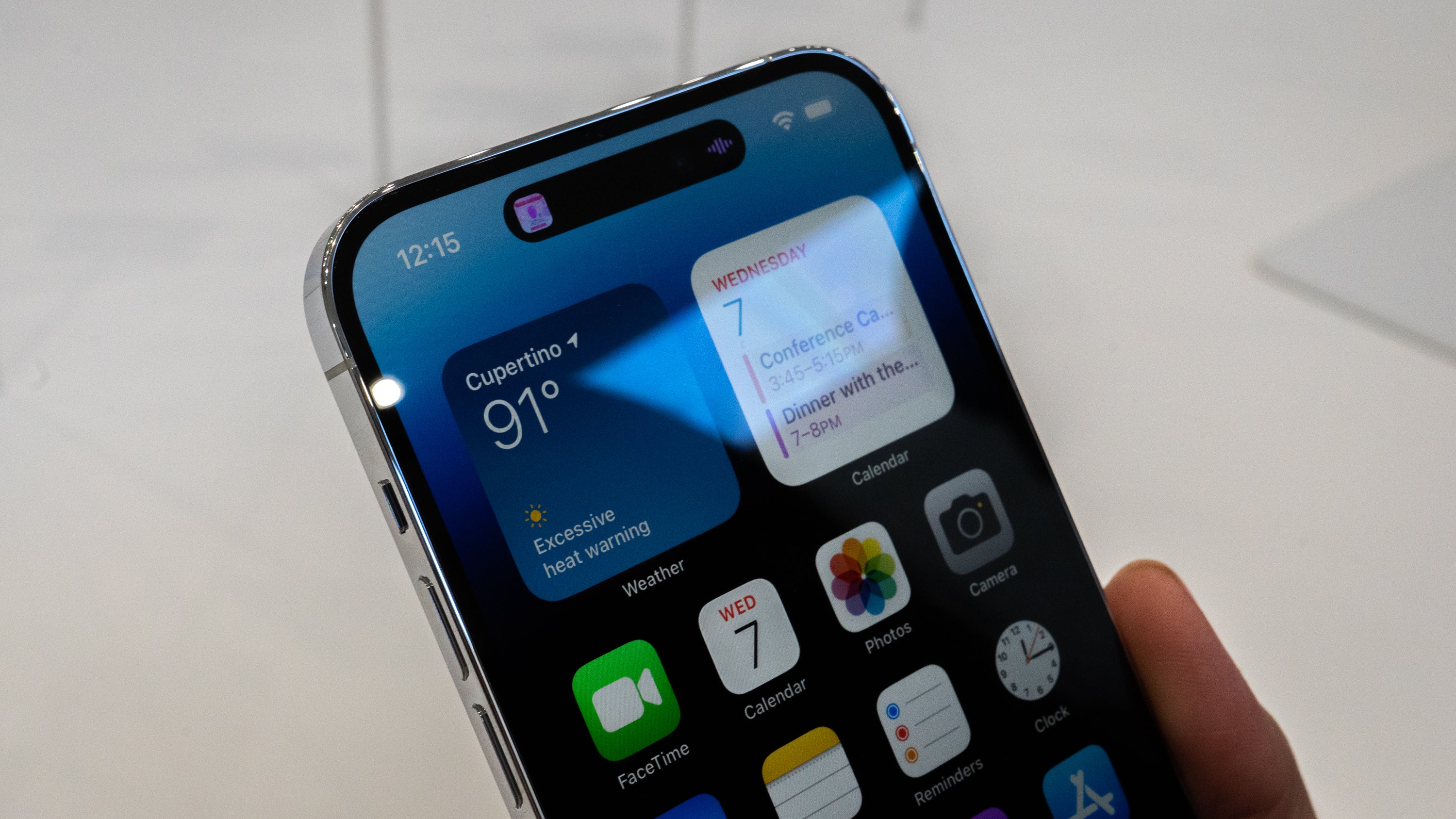
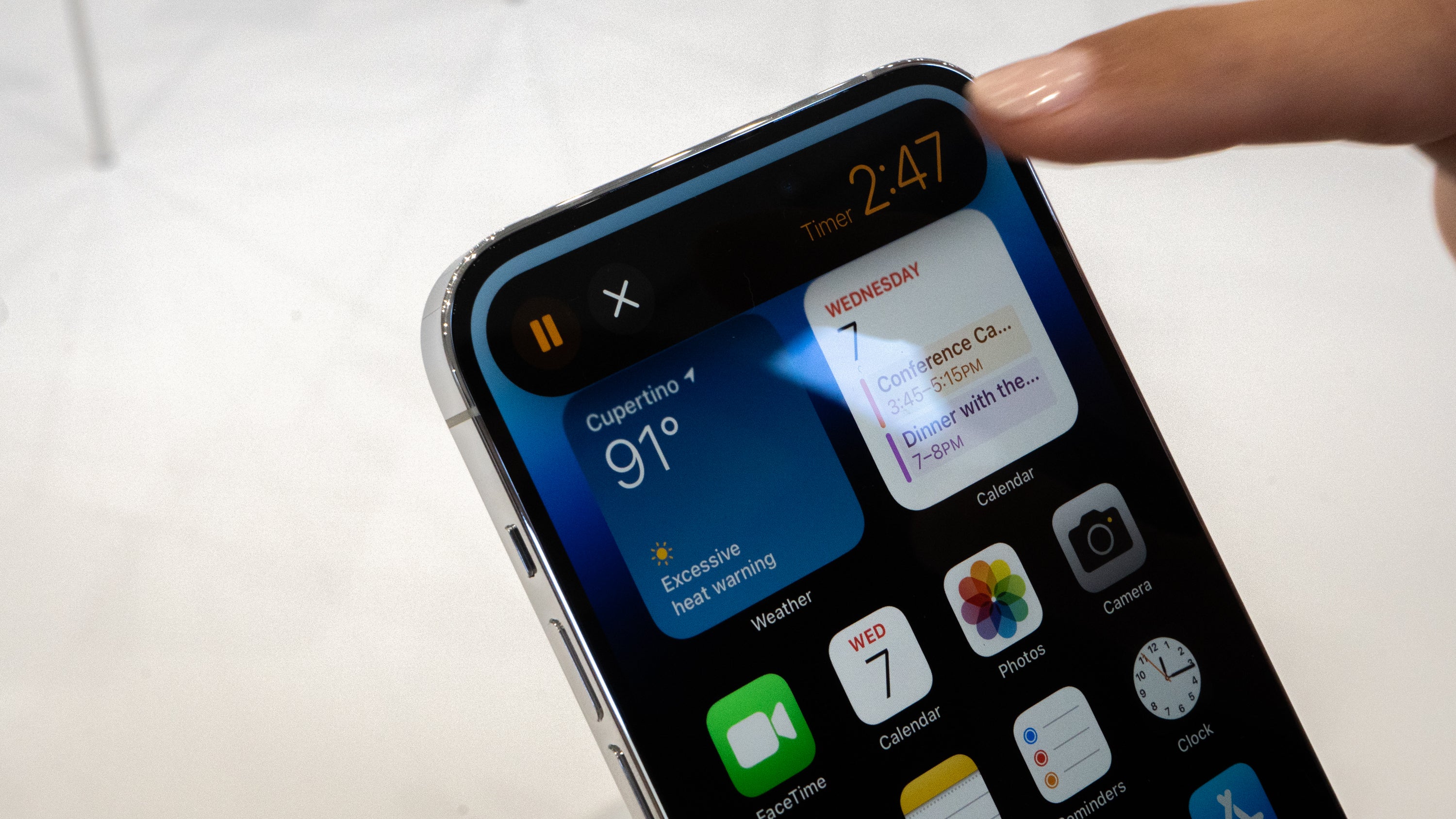
The iPhone 14 Pro also received a bump in camera capabilities. The rear-facing camera system includes a 48-MP camera with a quad pixel sensor, which Apple says is the largest sensor yet. There’s also a telephoto and ultra wide-angle lens. Like on some Android phones, including Samsung’s latest brood of Galaxy devices, you can flip into a full-force ProRAW mode. It’s as easy as tapping a button to get the iPhone 14 Pro to shoot with all 48 megapixels rather than engaging the AI-infused quad-pixel technology. This will allow you to essentially use the iPhone like a regular camera, where you can then take those photos into an editing suite like Adobe Lightroom to perform adjustments.
The iPhone 14 Pro has an improved A16 Bionic chip, Apple’s first mobile chip built on the 4nm process. I couldn’t get a feel for performance with the mere minutes I had with each phone, but I’ll be curious to see if the Bionic chip’s benchmarks continue to knock Qualcomm’s mobile chips out of the water.
The ultra-rugged Apple Watch Ultra
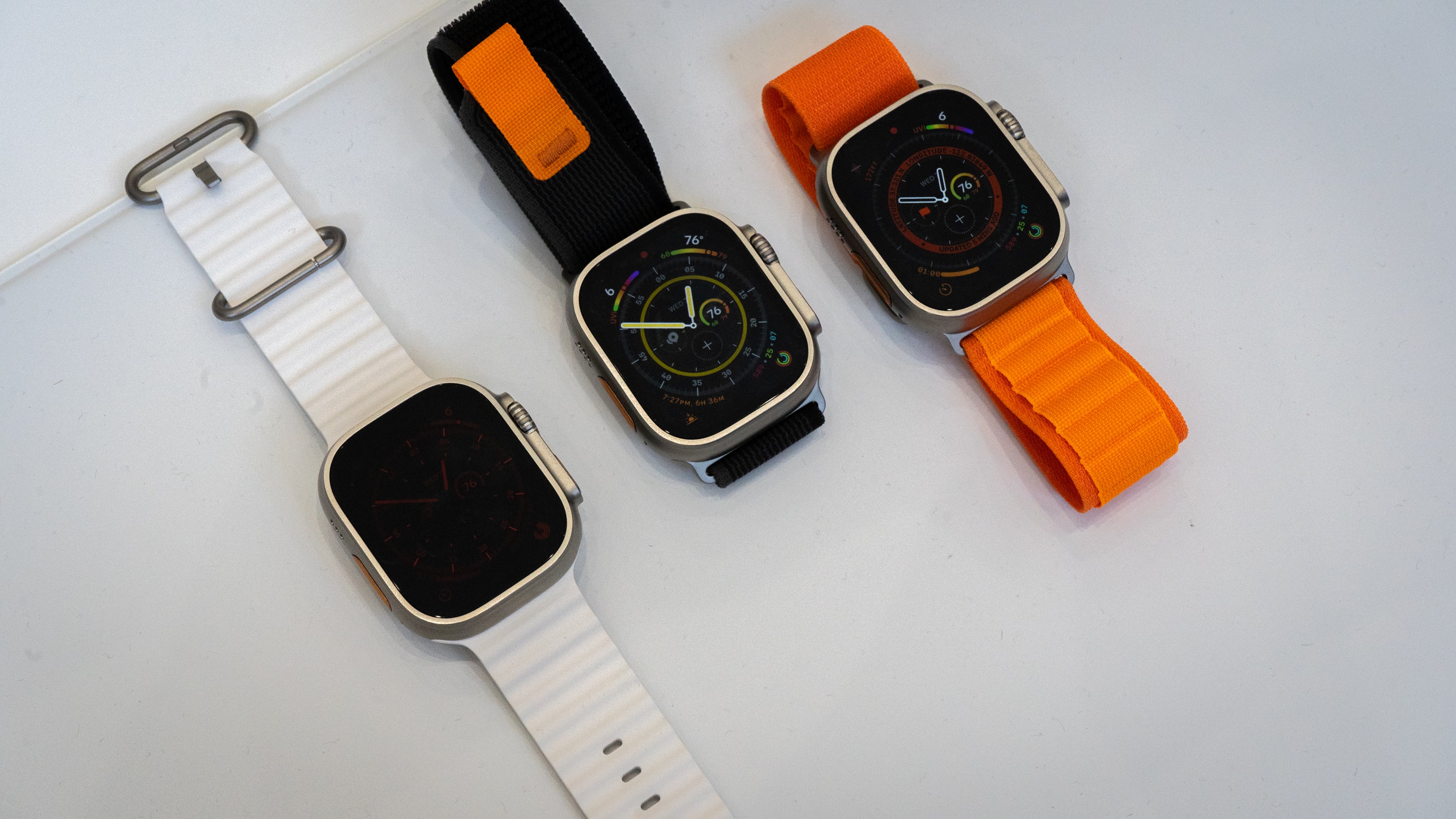
I did get a chance to try on the Apple Watch Series 8, but what caught my eye was the enormous Apple Watch Ultra. At 49mm, it’s not as big as I thought it would be. I found it comfortable on my small wrists, and usually, I reserve myself for 40mm watch faces and nothing bigger.
The Apple Watch Ultra is the smartwatch meant for the ultimate fitness enthusiast or a person who likes to train. If that’s you, you’ll be able to choose between the trail loop, alpine loop, or ocean band. I loved the trail loop band as everyday wear. It felt quite comfortable for the 10 minutes I had it on. But the ocean band, which lacks perforation and features ample space between notches to avoid moulding, was a little tight for my liking. Anyway, I’m not the target demographic for these bands. They’re meant for severe underwater and land athletes.
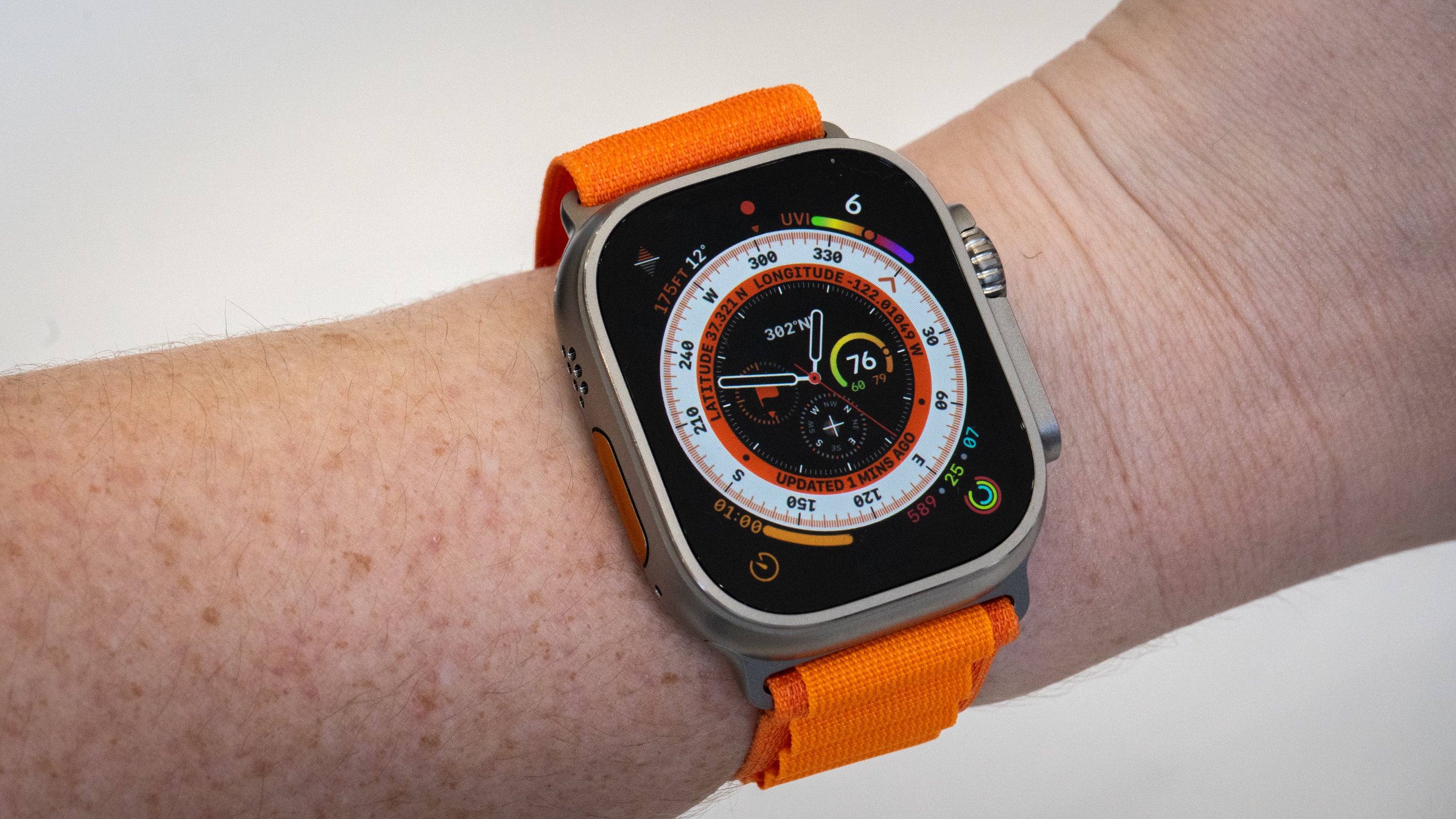
The upside to the Apple Watch Ultra is that it’s a much bigger screen than you’re likely used to with this particular lineup, so you’ll see more on the screen and have room for more complications. There are additional hardware buttons on the Ultra so you can program them to your liking. We’re hoping to get this smartwatch into the hands of someone who knows what it’s like being out in the backcountry or under water, so stay tuned for more. For now, if this watch can replace more dedicated gear, then it’s also a good indicator of Apple’s goal to make itself essential to your various everyday routines.
AirPods Pro’s ANC is cool, OK

I don’t commute anymore, so the idea of having earbuds on me that drown people out isn’t as necessary as it used to be. But then I tried out the new AirPods Pro and realised that I don’t want to hear people if I don’t have to. At the very least, let me muffle them.
I did not have time to set up the full Spatial Audio experience on the new Airpods Pro. It requires taking your iPhone to your ear and your head to adequately assess the acoustics it’s working with before making the necessary adjustments. But I got to try out the Active Noise Cancellation feature, which drowned out the noisy demonstration room where Apple had its products. I also listened to music and was impressed with the bass’s presence despite the low volume. I had a demonstration with a One Republic song, which is not my favourite, but I could still hear the bass thumping through enough to get into the groove. My biggest issue with the earbuds I have now is that the bass isn’t present at the low volume — which is a bummer. After all, just because you’re trying to listen to your tunes at a volume that allows you to focus on your surroundings doesn’t mean you don’t want to dance. The Airpods Pro 2 will be interesting to try with other genres like chill hop and space music. I wonder if these are buds that can also get me to sleep.
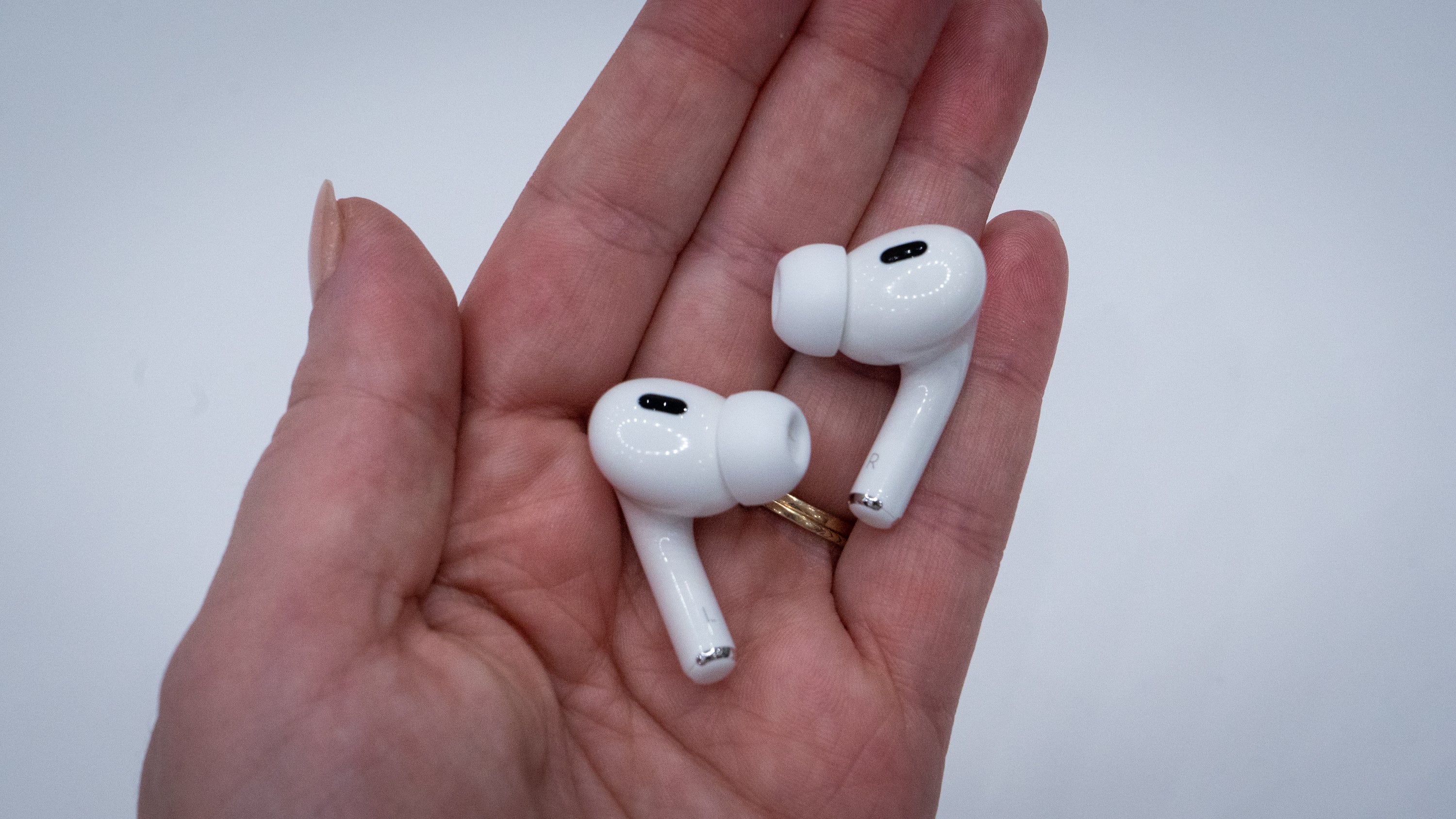
More to come
There is much more to say about Apple’s new products, but we’ll need to get them in hand before we can say anything more. We’ll be thoroughly testing the latest devices to see how they stand up to the competition. Apple’s new smartphones may not fold like Samsung’s devices or have all the AI ability of a Google Pixel phone. But people move to iOS because it offers utility without the fuss. We’ll see if that’s still the case once the new iPhones are on sale later this month.
Now, for iPhone 14 pre-orders
Pre-orders for the iPhone 14 will open at 10p.m. on Friday, September 9. Telstra, Optus and more will have plans available then.
Cheapest 24-month iPhone 14 (128GB) plans
Cheapest 24-month iPhone 14 Plus (128GB) plans
Cheapest 24-month iPhone 14 Pro (128GB) plans
Cheapest 24-month iPhone 14 Pro Max (128GB) plans
